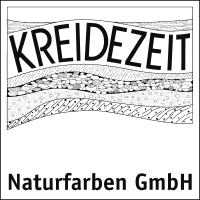With a simple test it is possible to distinguish mineral from organic pigments. Required are: a spoon, a micro-burner (storm lighter) and the pigment to be tested.
Detection of mineral pigments
Put some pigment on a spoon and heat with the burner for a few seconds until the pigment glows. If no plume of smoke rises after the flame has gone out and no smell can be perceived, it is a mineral pigment. However, it is not possible to distinguish between earth and artificial mineral pigments, or toxic and non-toxic pigments. If the color tone of the pigment changes towards red or brown after firing, the pigment contains iron. Some mineral pigments are temperature stable and show no colour change when heated: e.g. spinels, chrome oxide green. Ultramarine violet turns blue when heated. Ultramarine blue separates yellow sulphur under the influence of the blue flame. Titanium white appears yellow when hot and turns white again when it cools down.
Nickel titanium yellow turns orange when heated and yellow again when cooled. Toxic lead white already turns into the light yellow toxic lead at temperatures above 230°C
Recognition of organic pigments
When the flame comes into contact with the pigment, whitish ash or a tar-like brew is produced immediately. When the flame goes out, smoke rises. A strong to biting smell (burnt plastic) is perceptible.
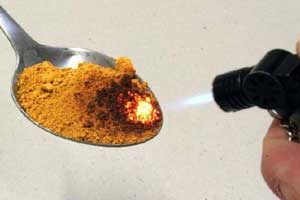 Burning of yellow ochre
Burning of yellow ochre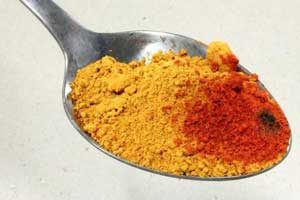 yellow ochre, red after burning (red ochre!)
yellow ochre, red after burning (red ochre!)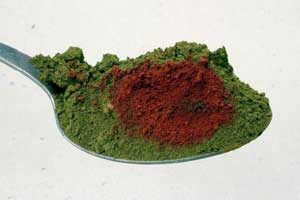 Umber green, Cyprus, reddish brown after burning (burnt Umber)
Umber green, Cyprus, reddish brown after burning (burnt Umber)
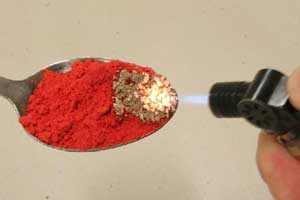 burning of artificial polymer based red pigment
burning of artificial polymer based red pigment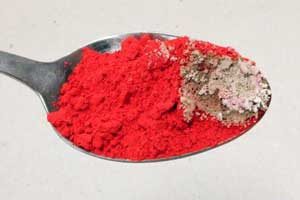 polymer based red pigment with white-grey ashes
polymer based red pigment with white-grey ashes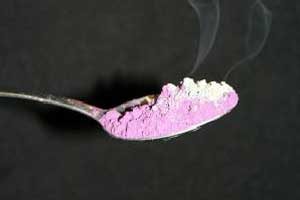 polymer based violet pigment with white ash and rising smoke
polymer based violet pigment with white ash and rising smoke